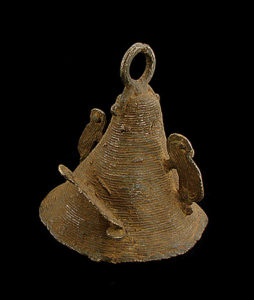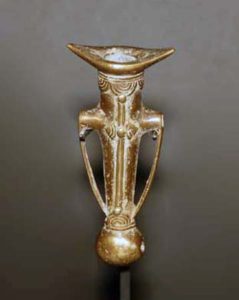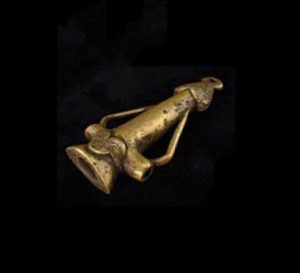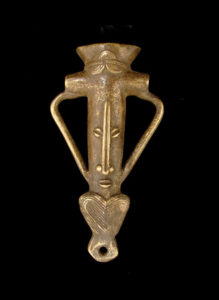Gurunsi
A number of tribes who speak dialects of the Gur language have been grouped together under the name Gurunsi, which means “iron does not penetrate.” It is the Mossi that gave this name to these diverse people. The Gurunsi people of Ghana and Burkina Faso are known for their elaborate mural painting houses with architectural designs as well as their (sculptural) zoomorphic masks, covered with geometric motifs. The Gurunsi masks represent bush spirits and have a role in divination rituals. They are characterized by eyes set within concentric circles and have polychromatic effects in black, white and red. Winiama sculptures are the most geometric. The masks are worn by dancers during funerals, initiation ceremonies, fertility rites and market-day festivities.
The Gurunsi (“Gourounsi”) are farming people except during the dry season when they hunt and fish. Their society is an acephalous, that is, it has no political organization or centralized power. They are led by the council of elders of lineage. They believe in a god creator called “Yi” that distanced himself from man after creating the world. “Yi” gave “Su” the task of taking care of man. “Su” is represented in both the masks and the statues. An altar is consecrated to “Yi” in the center of the village, and each clan keep magical objects in a hut that allows them to communicate with the forces of nature.
Oral traditions of the Gurunsi tell that they originated from the western Sudan near Lake Chad and by 1100 AD, they had migrated to their present location.
Source:
Baquart, Jean-Baptiste. The Tribal Arts of Africa. New York: Thames and Hudson Inc.




